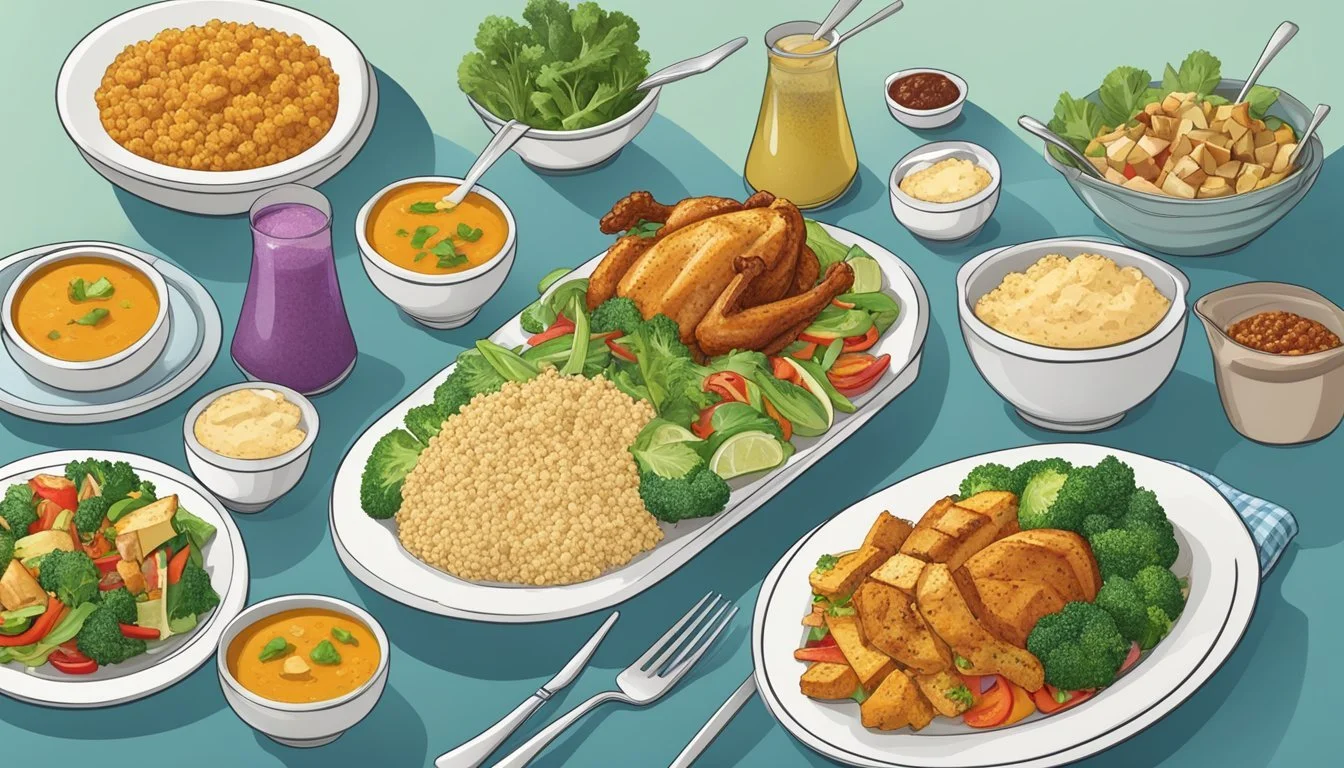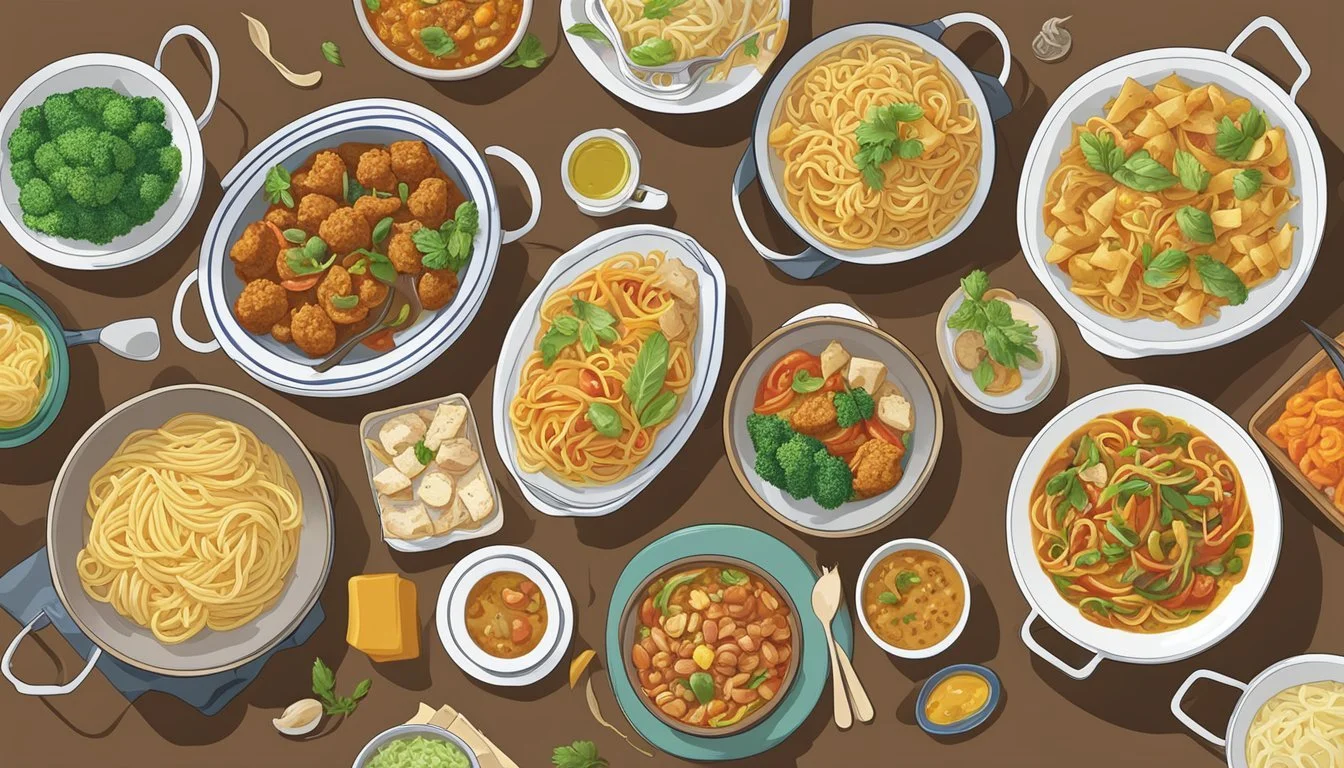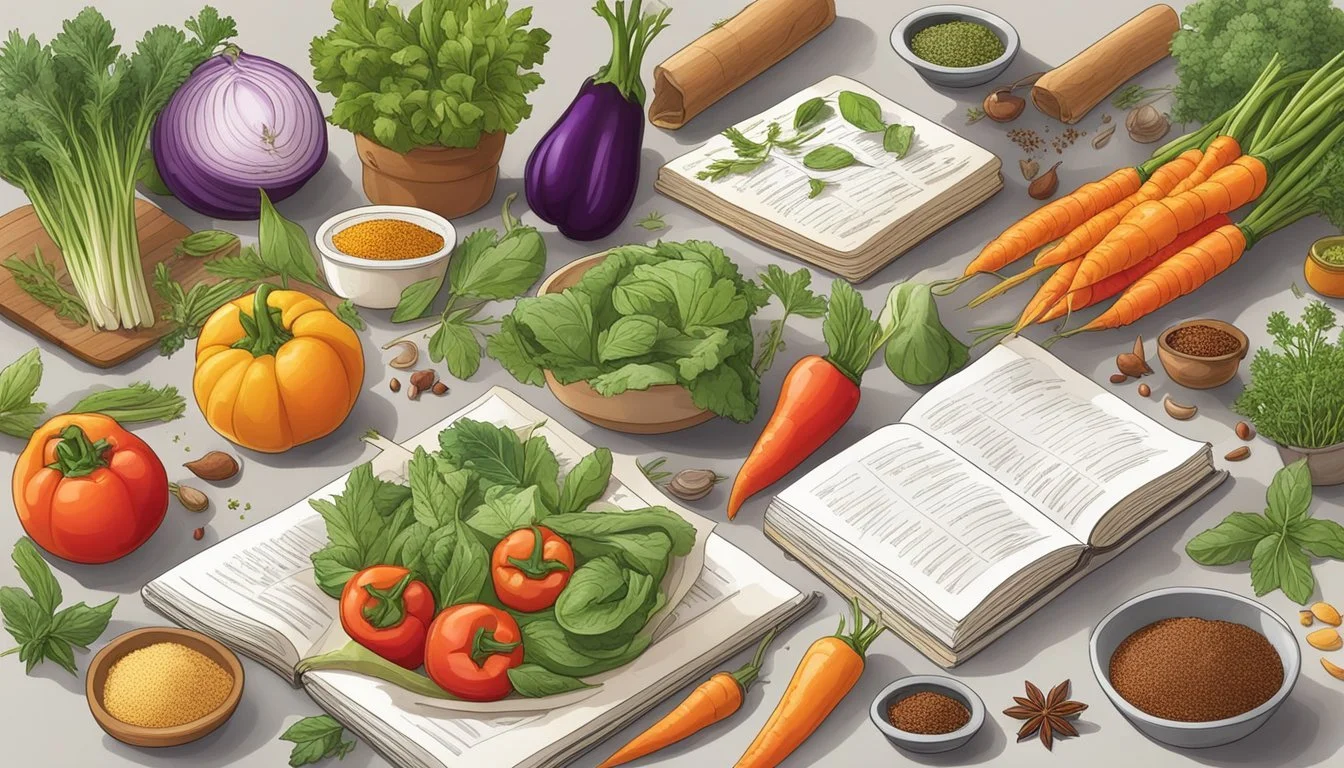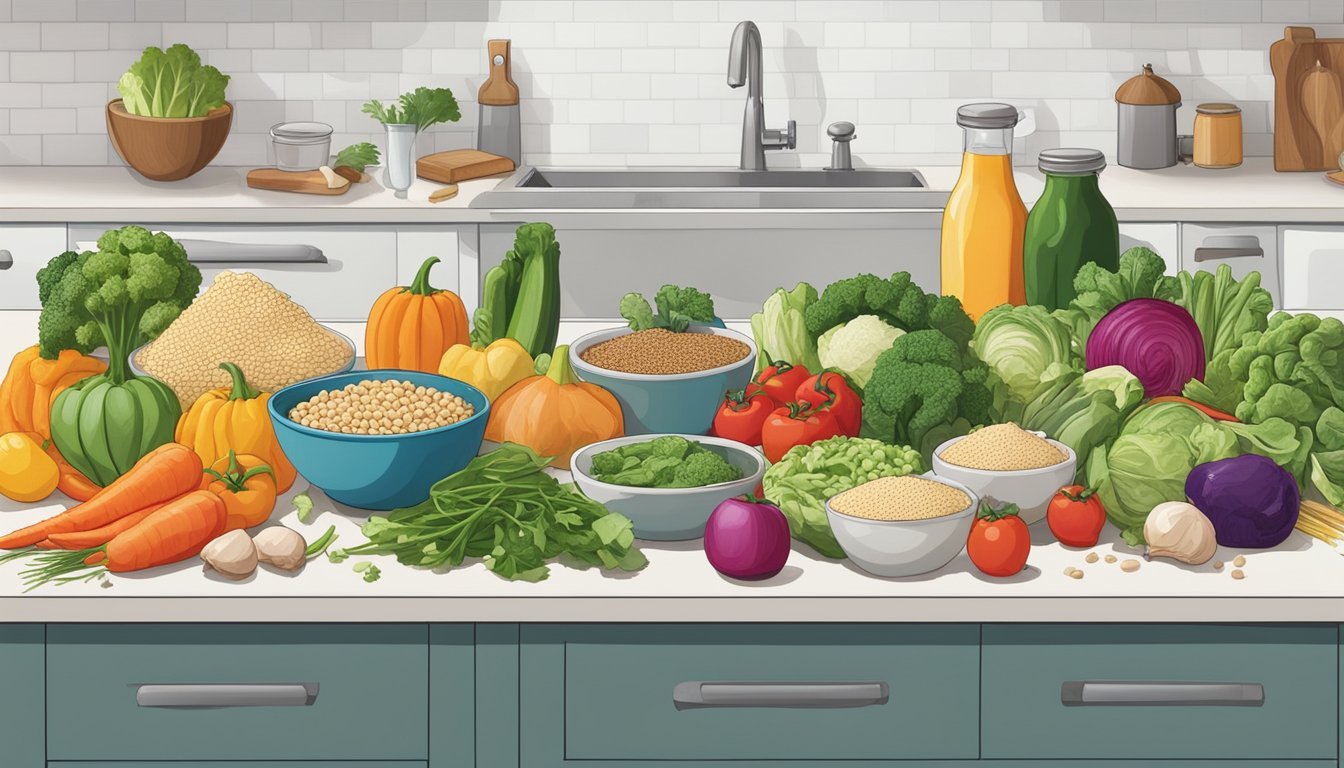What Are Some Lactose-Free Dinner Recipes?
Easy and Delicious Ideas for Your Meal Plan
Navigating dinner options when you're lactose intolerant can be challenging. Lactose, the sugar found in milk and dairy products, often lurks in unexpected places, making the seemingly simple task of choosing a meal complex. However, the culinary world has evolved to accommodate various dietary restrictions, resulting in a bevy of lactose-free recipes that don't sacrifice flavor or satisfaction. These recipes ensure that everyone, regardless of dietary constraints, can enjoy a delicious and fulfilling dinner.
Lactose-free dinner recipes often substitute dairy ingredients with plant-based alternatives or simply omit them without compromising the essence of the dish. From savory rubs for roast chicken that create a crispy, flavorful skin without the need for butter, to inventive desserts like avocado chocolate mousse, the possibilities are plentiful. Satisfying meals that skip dairy altogether, such as spicy coconut stews with spinach and beans or a hearty white bean scampi, showcase that lactose-free recipes can be both nutritious and diverse. The focus is on using whole foods and natural substitutes to deliver meals that are agreeable to a lactose-intolerant digestive system.
By exploring lactose-free recipes, one uncovers a world of innovative cooking that celebrates a wide array of ingredients and techniques. Whether it's leveraging the natural creaminess of avocados for desserts or utilizing gluten-free and dairy-free mixes for waffles, these recipes cater to those seeking lactose-free options without diminishing the joy of eating. Cooking without dairy opens the door to a host of creative and appetizing mealtime solutions that promise to delight the palate.
Understanding Lactose Intolerance
Individuals with lactose intolerance often seek lactose-free meals to alleviate digestive discomfort, while others may choose such alternatives for lifestyle preferences or health benefits. Lactose-free cooking incorporates specific non-dairy ingredients that can support well-being.
What Is Lactose Intolerance?
Lactose intolerance is a condition where the body is unable to fully digest lactose, a sugar predominantly found in dairy products. This is due to a deficiency of lactase, the enzyme responsible for breaking down lactose in the digestive system. Common symptoms include bloating, gas, abdominal pain, and diarrhea following the consumption of dairy products. It's important to distinguish between lactose intolerance and a milk allergy, which involves the immune system.
Health Benefits of Lactose-Free Meals
A lactose-free diet can offer several health advantages particularly for those who are lactose intolerant. By avoiding lactose, they can prevent the uncomfortable symptoms associated with the condition. Moreover, lactose-free meals can be part of a balanced diet and may sometimes lead to improved digestion and nutrient absorption for sensitive individuals. Additionally, lactose-free alternatives can also be beneficial for those who are dairy-free by choice, such as vegans.
Typical benefits for lactose-intolerant individuals include:
Reduced gastrointestinal discomfort
Prevention of symptoms like bloating and diarrhea
Enhanced digestion and comfort after meals
Key Ingredients in Lactose-Free Cooking
In lactose-free cooking, dairy products are replaced with alternatives that are free from lactose. These ingredients can provide similar consistency and flavor to traditional dairy while catering to those with intolerances or dietary preferences.
Common lactose-free alternatives include:
Milk Substitutes: Almond milk, rice milk, and soy milk.
Butter Replacements: Olive oil, coconut oil, and vegan margarine.
Cheese Substitutes: Nutritional yeast, soy-based products, and vegan cheese brands.
These substitutes not only avoid lactose but can also offer a variety of flavors and nutritional profiles that cater to different recipes and tastes. When cooking, these ingredients can typically be used in equivalent amounts to their dairy counterparts.
Lactose-Free Dinner Ideas
For those with lactose intolerance or dairy allergies, finding delicious dinner options can be challenging. This guide offers an array of dishes, from hearty main courses to delectable sides and starters, all without a trace of lactose.
Main Dishes Without Dairy
One can easily prepare satisfying main dishes that are dairy-free. For a robust meal, consider a beef stew, brimming with fork-tender beef, carrots, potatoes, and rich in flavor from a blend of herbs and a savory vegetable broth.
Savory Rubbed Roast Chicken: Utilize a combination of spices such as paprika and garlic powder to create a bright, spicy roast chicken.
Gluten-free and dairy-free options: A vegan pizza can be an enticing main course, with gluten-free crusts readily available and toppings like bell peppers and a rich tomato sauce combined with dairy-free cheese alternatives.
Vegetarians can relish dishes made with hearty grains like quinoa and brown rice, which can be the foundation for delightful stir-fries or stuffed sweet potatoes.
Delicious Lactose-Free Sides
Sides should complement the main dish and can be equally flavorful without dairy.
Cauliflower Rice: A lighter side option is cauliflower rice, which can be sautéed in olive oil and seasoned well for a satisfying accompaniment.
Roasted Sweet Potatoes: These can be cut into wedges, seasoned, and roasted for a naturally sweet and filling side.
Appetizers and Snacks
Beginning a meal with appetizers or having snacks on hand that meet lactose-free requirements is simpler than one might think.
Edamame: These young soybeans are perfect steamed and sprinkled with a pinch of salt.
Avocado Chocolate Mousse: A surprising but delightful treat, avocados can be transformed into a creamy, chocolate mousse without any dairy.
Lactose-free cooking does not have to be restrictive but can be a culinary exploration that satisfies the palate just as much as traditional cooking. With these ideas, anyone can enjoy a full course meal without the worry of lactose.
Cooking Techniques and Alternatives
Creating lactose-free dinner recipes can be accomplished with ease by using a variety of dairy substitutes and flavor-enhancing ingredients. Mastering the use of alternatives to traditional dairy products, as well as learning to leverage the natural flavors of herbs and spices, can transform meals without sacrificing taste or texture.
Using Dairy Substitutes
Dairy products such as cheese, milk, butter, and yogurt are common in many recipes. Lactose-free cooking involves using suitable replacements that maintain the desired characteristics of these ingredients. Here are some common substitutes:
Cheese: Nutritional yeast can provide a cheese-like flavor in many recipes, making it an excellent topping for pasta and salads.
Milk: Almond milk is often employed as a non-dairy milk alternative due to its neutral taste, and it's ideal for both sweet and savory dishes.
Butter: In roasting and sautéing, olive oil can act as a butter substitute, giving dishes a rich mouthfeel and depth of flavor.
Yogurt: Coconut cream offers a similar texture and creaminess to yogurt, providing a perfect base for dressings and marinades.
Replacing dairy doesn’t mean compromising on flavor or texture, as long as the right substitutes are chosen for the right dishes.
Herbs and Spices for Flavor Enhancement
Without the richness of dairy, herbs and spices provide an essential flavor boost in lactose-free cooking. They can elevate a dish from simple to spectacular with their aromatic qualities. Consider the following:
Garlic: A universal flavor enhancer that can be used in almost any savory dish for a punch of aroma and taste.
Thyme: This herb imparts a subtle, earthy flavor ideal for poultry, stews, and roasted vegetables.
Lemon juice: A splash of lemon juice can brighten up flavors, balance richness and add a zesty note that complements many ingredients.
By incorporating these flavor enhancers, one can create full-bodied dishes that don’t rely on dairy for their deliciousness.
Lactose-Free Sauce and Dressing Recipes
Sauces and dressings are foundational components that contribute significantly to the flavor profile of a meal. Here are some lactose-free alternatives:
Lactose-Free Bechamel Sauce:
Ingredients:
2 tbsp olive oil
2 tbsp flour
1 cup almond milk
Salt and pepper to taste
Method:
In a saucepan, heat olive oil over medium heat.
Stir in flour to make a roux.
Gradually add almond milk, whisking continuously until smooth and thickened.
Season with salt and pepper.
Herb Vinaigrette Dressing:
Ingredients:
1/2 cup olive oil
1/4 cup white wine vinegar or lemon juice
1 tbsp chopped fresh herbs (thyme, parsley, or basil)
1 tsp garlic, minced
Salt and pepper to taste
Method:
Combine all ingredients in a bowl.
Whisk until well blended.
Adjust salt and pepper to taste.
Sauces and dressings made without dairy can still yield a lush and satisfying complement to any meal, rounding out flavors and adding moisture and texture.
International Lactose-Free Recipes
Dining tables around the world embrace diverse flavors without the need for lactose. From the aromatic spices used in Asian cuisine to the fresh, simple ingredients that characterize Mediterranean dishes, and the bold tastes found in Southwestern and Latin American meals, each region showcases its unique culinary heritage through a variety of lactose-free recipes.
Asian-Inspired Dairy-Free Dishes
Asia delivers a bounty of dishes where dairy is traditionally absent, making these recipes naturally lactose-free. A favorite among these is Thai Pasta with a Spicy Peanut Sauce. One can prepare Thai pasta using rice noodles, complemented by a rich, creamy peanut sauce made with peanut butter, soy sauce, ginger, and chili flakes. It's both a dairy-free and a flavor-packed option.
Another staple is Fried Rice—a versatile dish that can be tailored with vegetables, chicken, or tofu. It begins with rice sautéed in a bit of oil, typically sesame, with a mix of onions, peas, and carrots, and often seasoned with tamari sauce, ensuring the meal is free from lactose.
Mediterranean Flavors Without Lactose
The heart of Mediterranean cooking is in its use of fresh produce and healthy fats like Olive Oil instead of dairy. One can enjoy a dairy-free Mediterranean meal starting with a base of Canned Tomatoes, adding a splash of olive oil, garlic, onions, and herbs to create a flavorful tomato sauce. This sauce can accompany anything from whole grain pasta to grilled fish.
Lactose-free options abound with salads featuring ripe Tomatoes tossed with olive oil, cucumber, and herbs. Herbed roasted vegetables and legumes are also central to a Mediterranean diet and need no lactose to enhance their tastes.
Southwestern and Latin Lactose-Free Recipes
Southwestern and Latin American cuisines offer hearty lactose-free options. Pork and Apple Tamales are a delightful option, where masa (corn dough) is filled with a savory mixture of pork and apples, then wrapped and steamed in corn husks.
Another representative dish is dairy-free Turkey Potpies, replacing the traditional cream with a rich, well-seasoned broth and a cornmeal crust. This modification retains the comforting nature of the potpie while eliminating lactose, accommodating dietary requirements without compromising on taste.
Vegetable-Centric Meals
Vegetable-centric meals provide abundant options for those looking to minimize or eliminate lactose from their dinners. Rich in nutrients and flavors, these dishes can cater to both vegan and vegetarian diets, incorporating a diverse range of vegetables from broccoli to spinach.
Lactose-Free Vegan and Vegetarian Entrees
Stuffed Peppers: They offer a beautiful vessel for a variety of fillings. Bell peppers can be stuffed with a seasoned mixture of quinoa or rice, black beans, corn, and spices, then baked until tender.
Mushroom Risotto: Utilizing arborio rice, a risotto can be turned into a creamy, lactose-free delight without the need for dairy. The rich umami flavor from mushrooms such as cremini or portobello acts as a satisfying substitute for cheese.
Zucchini Noodles: For a lighter fare, zucchini can be spiralized to create noodles ("zoodles") and tossed with a rich tomato sauce and chickpeas for added protein.
Cauliflower Steaks: Sliced into thick steaks and roasted with a mix of spices, cauliflower steaks prove to be a hearty and satisfying centerpiece to any meal.
Broccoli and Tofu Stir-Fry: A simple yet nourishing stir-fry can be made with broccoli, tofu, and a flavorful soy sauce-based marinade, served over brown rice or quinoa.
Salads and Soups
Kale and Spinach Salad: Leafy greens like kale and spinach are perfect bases for a lactose-free salad. The greens can be massaged with a lemon-olive oil dressing and topped with roasted nuts and seasonal fruits.
Vegetable Soup: A warm and comforting vegetable soup can be prepared with a mirepoix base, followed by a selection of vegetables such as carrots, celery, and potatoes, and simmered in a rich vegetable broth flavored with herbs.
Chickpea Salad: Chickpeas serve as an excellent protein component in salads. They can be combined with chopped veggies, fresh parsley, and a tangy dressing for a filling meal.
A carefully chosen selection of vegetables and legumes form the cornerstone of these dairy-free entrees and side dishes, offering a spectrum of textures and tastes suitable for any palate.
Desserts and Sweets
For those seeking to enjoy sweets without lactose, there are abundant options ranging from traditional desserts to innovative snacks. These dairy-free delights are perfect to satisfy sweet cravings at the end of a meal or as a quick nibble throughout the day.
Lactose-Free Treats
Pumpkin Pie: A classic dessert often enjoyed during holidays can be made lactose-free with ease. Substitute the regular milk or cream with a dairy-free alternative such as almond milk, and ensure the crust is butter-free. Brown sugar can still be used to add a rich sweetness to the filling.
Ingredients:
Pumpkin puree
Dairy-free milk (almond, soy, coconut)
Brown sugar
Pie spices (cinnamon, nutmeg, ginger)
Dairy-free pie crust
Dairy-Free Dessert Options: Frozen Treats: Utilize fruit purees or dairy-free milks to create refreshing ice creams or sorbets. Chocolate Delights: Dark chocolate is often dairy-free by nature; enjoy it in truffles or over fruits like strawberries. Baked Goods: Opt for oil-based recipes or dairy-free butters to make cookies and cakes.
Quick and Easy Dairy-Free Snack Ideas
For those short on time or seeking something light, quick dairy-free snacks can be both satisfying and healthy.
Edamame: These young soybeans offer a punch of protein and are simply seasoned with sea salt for a savory bite.
Hummus: Blended chickpeas with tahini, lemon juice, and garlic create a creamy spread that's ideal with vegetable sticks or bread, entirely dairy-free.
Avocado: Rich and creamy, avocados can be mashed with a sprinkle of salt for a simple snack or used as a spread on toast.
Nutrition and Meal Planning
When adopting a lactose-free diet, one must focus on nutritional balance and strategic meal planning to maintain a healthy and varied diet.
Balancing a Lactose-Free Diet
A balanced lactose-free diet prioritizes nutritional variety and ensures adequate protein intake. Individuals must replace dairy with alternative calcium sources such as fortified plant milks or leafy greens. Including protein-rich foods like beans, nuts, and certain cuts of meat is essential. Foods high in other vital nutrients, such as vitamin D and magnesium, should also be included. Carrots and other vegetables not only contribute important vitamins and fiber but also add flavor and color to meals.
Planning Lactose-Free Meals for the Week
Efficient meal planning involves selecting recipes and preparing ingredients ahead of time. To ease the process, individuals should create a weekly menu that incorporates a range of dairy-free recipes. For example, planning a meal such as Spicy Chili Oil Noodles with Zucchini & Carrots ensures a person gets a wholesome blend of vegetables and spices. Meal planning also reduces the likelihood of resorting to less healthier options and helps manage portion sizes. Organizing a grocery list that aligns with the planned meals helps streamline shopping and reduces food waste.







